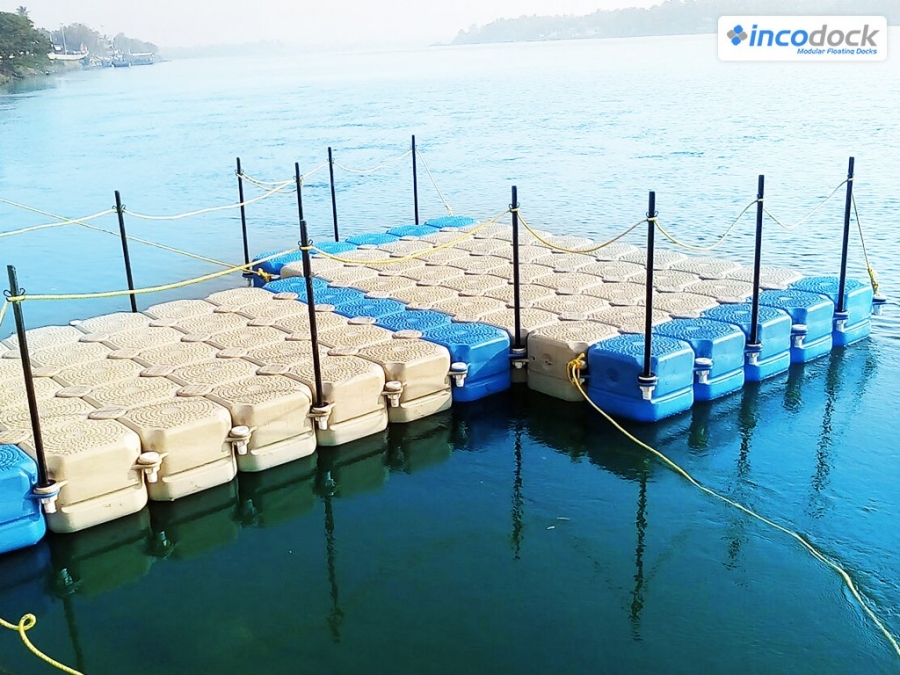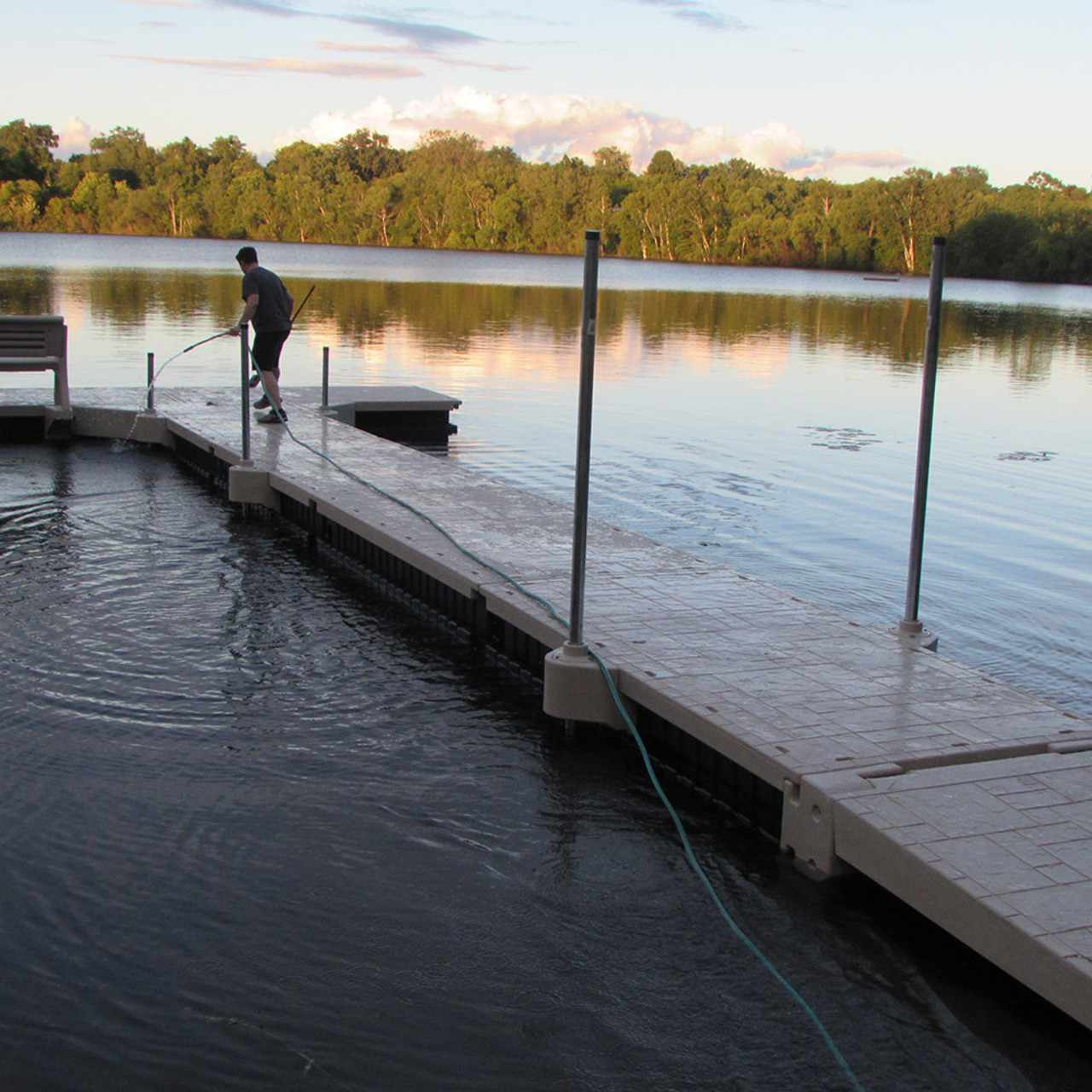Upgrade Your Beachfront With Long Lasting Floating Docks
Upgrading your waterfront with resilient floating docks can considerably boost both functionality and looks, offering a versatile option for various water tasks. With a variety of materials readily available, consisting of low-maintenance alternatives and traditional wood, selecting the best dock can enhance your individual style and fulfill useful requirements.
Benefits of Floating Docks
Floating docks deal a multitude of benefits that boost their charm for different maritime applications. Among the primary advantages is their versatility to changing water degrees - dock company. Unlike traditional fixed docks, floating docks fluctuate with the trend, making sure regular access for boats and boat regardless of ecological problems. This attribute considerably decreases the danger of damage to vessels, as they stay securely anchored also throughout changes in water depth.
Additionally, floating docks are simpler to install and relocate, supplying adaptability for short-lived or seasonal use. Their modular style enables personalization to fit details requirements, whether for personal marinas, household watersides, or commercial applications.
Additionally, floating docks develop minimal disruption to the aquatic environment, protecting regional ecological communities and lowering the chance of disintegration. They likewise provide enhanced safety and stability for users, as their resilient nature uses a much more flexible surface area than rigid structures.
Additionally, floating docks can promote a varied range of tasks, such as angling, swimming, and entertainment boating, making them a useful property for waterfront growth. Their versatility and functionality make floating docks a favored option for a selection of maritime projects.
Picking the Right Products
Choosing proper materials for floating docks is essential to their longevity, performance, and total effectiveness. When choosing materials, take into consideration aspects such as ecological exposure, upkeep demands, and structural integrity. Common products include timber, plastic, light weight aluminum, and composite choices, each offering distinctive benefits and negative aspects.
Wood, while visually pleasing, needs normal maintenance to avoid rot and decay. Pressure-treated wood can boost longevity, but it might still give in to water damages over time. Plastic drifts, typically made from high-density polyethylene, are immune to rust and require minimal maintenance, making them an appealing selection for low-maintenance applications.
Light weight aluminum is an additional feasible option, recognized for its strength and light-weight residential properties. It is immune to corrosion and can hold up against extreme climate condition, although it might be extra expensive than other materials. Compound materials combine the very best attributes of wood and plastic, providing a low-maintenance and durable option that mimics the look of wood without the linked downsides.
Eventually, the option of material need to line up with the meant usage, ecological factors to consider, and spending plan restraints, ensuring a sturdy and functional floating dock that meets your certain demands.
Installment Process Introduction
The successful installation of a floating dock counts on mindful planning and implementation, making sure that it runs successfully in its desired environment. The initial action entails evaluating site conditions, including water depth, coastline attributes, and dominating weather patterns, which will continue reading this certainly inform the dock style and anchoring system.
Adhering to the site analysis, the next stage is to prepare the floating dock parts. This consists of putting together the structure, protecting drifts, and connecting any kind of essential equipment. It is crucial to ensure that all connections are waterproof and robust to stand up to aquatic conditions.
As soon as the dock is constructed, the setup procedure commences with placing the dock in the water. This can involve a crane or various other training tools, especially for bigger structures. Appropriate positioning is essential for functionality and safety and security.

Maintenance Tips for Durability
Normal upkeep is necessary for ensuring the long life and optimum efficiency of a drifting dock. To achieve this, start with routine examinations at the very least twice a year, concentrating on the stability of the dock's structure, consisting of the flotation protection tools and attaching equipment. Try to find indications of deterioration, wear, or damage, and address any type of concerns without delay to avoid more damage.
Cleansing is an additional important aspect of maintenance. Get rid of debris, algae, and barnacles from the dock's surface area to avoid slippery conditions and maintain visual charm. Utilize a soft brush and a moderate cleaning agent to stay clear of damaging the dock's products.
Furthermore, make sure that the dock is properly anchored and protected to endure seasonal changes in water levels and climate condition. Check the anchoring system for security and make changes as necessary.
Enhancing Your Outdoor Visual
To create a visually enticing outdoor room, including a drifting dock can significantly improve the overall aesthetic of your waterside home. Floating docks are not only functional but can also function as a striking prime focus that complements the natural environments - floating docks. Offered in various materials and layouts, these docks can be tailored to match your home's building style and landscape
The addition of ornamental elements, such as incorporated lights or elegant barriers, additionally elevates the dock's visual appeal. Take into consideration using all-natural timber surfaces, which mix flawlessly with the setting, or going with modern-day products like light weight aluminum or composite decking that use a smooth, contemporary appearance.
Strategically positioning planters or seating locations on or around the dock can create inviting rooms that encourage leisure more and satisfaction of beachfront views. In addition, including shades and structures that balance with your landscape will certainly create a cohesive aesthetic throughout your outside area.

Conclusion

Upgrading your waterside with resilient floating docks can substantially enhance both capability and aesthetics, providing a flexible remedy for different water tasks. Unlike standard set docks, floating docks increase and fall with the trend, guaranteeing constant ease of access for boats and watercraft regardless of environmental problems.Choosing useful site appropriate materials for floating docks is important to their durability, efficiency, and general effectiveness.Once the dock is put together, the setup process commences with positioning the dock in the water.In recap, floating docks offer many benefits, including adaptability to water degree adjustments and a variety of material choices.